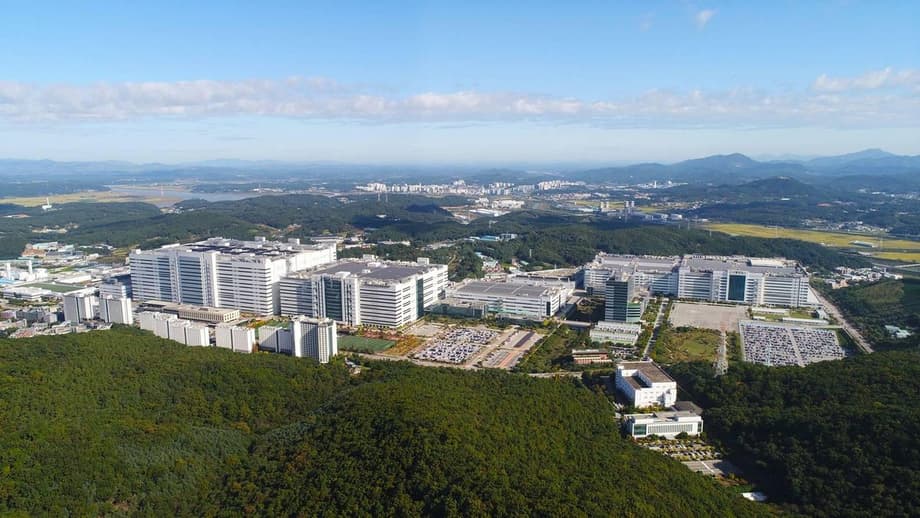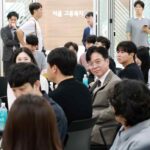Police raids at display makers put leaks back in the spotlight
A pair of rapid police raids at LG Display in Paju and at Samsung Display in Asan has pushed technology leakage back to the center of South Korea national conversation. Investigators suspect that employees handed advanced display manufacturing know how to a Chinese company. The industrial technology security unit seized hundreds of photos of internal process documents, production diagrams, and lab notes, according to officials. The raids come after repeated warnings from executives that each breach erodes an innovation edge built over decades, and that rivals in China are closing remaining gaps faster than many expected. The display supply chain touches everything from smartphones to televisions and vehicle dashboards, so a meaningful leak can echo across multiple markets.
- Police raids at display makers put leaks back in the spotlight
- The DRAM case that accelerated CXMT
- A pattern of rising cases and massive losses
- Are penalties and enforcement keeping pace
- China recruitment and talent flows reshape competition
- Beyond semiconductors displays batteries and clean tech under pressure
- How companies are trying to lock down secrets
- Geopolitical backdrop and policy choices
- Key Points
Law enforcement recorded 27 cases of overseas technology leaks last year and eight more in the first half of this year, with most traced to Chinese recipients. Incidents spanned semiconductors, display panels, and rechargeable batteries. Officials classify a subset of sensitive know how as national core technologies. These are capabilities that, if compromised, can hurt national security or have a significant economic impact. Loss of those crown jewels risks weakening export strength and supply chain resilience. By sector, cases last year included nine incidents tied to semiconductor processes and eight linked to display technology. The pattern reflects a broader shift from cyber intrusions to insider assisted leakages, where process steps and parameters are carried out by people who know exactly what matters most.
Why display secrets matter
From OLED to QD OLED and micro OLED, displays depend on complex stacks of materials, deposition recipes, and encapsulation techniques that determine yield and lifetime. Small tweaks to deposition temperature, mask alignment, carrier gas flow, and proprietary emitter formulations can translate into higher efficiency and better burn in resistance. Process windows are guarded tightly because they take years of trial and error to refine. A rival that gains internal documents or even photos of tool control screens can bypass long test cycles and lock in improvements without paying the full research cost.
The DRAM case that accelerated CXMT
On October 1 prosecutors indicted three former Samsung Electronics employees for allegedly using leaked DRAM manufacturing technology to help China based ChangXin Memory Technologies, known as CXMT. The case centers on Samsung 18 nanometer DRAM process, a node developed at considerable cost, estimated at 1.6 trillion won. Investigators say the trio obtained process files and know how from two other former employees who had been charged previously. They then verified the data by dismantling Samsung modules, cross checking test structures, and conducting manufacturing trials until the process was ready. CXMT announced in 2023 that it had become the first Chinese maker to mass produce 18 nanometer DRAM chips, a milestone that prosecutors now link to stolen know how.
Prosecutors say the recruits were promised salaries of up to 3 billion won per year, three to five times their prior pay. One former worker is being pursued under an Interpol red notice for copying hundreds of steps in the DRAM flow into notebooks. Authorities estimate damage to Samsung of around 5 trillion won over the past year, with losses expected to grow as the Chinese producer gains customers. Defense lawyers in such cases have argued that some process information is publicly available or derived from prior work, but investigators cite a trail of internal materials and test paths that they say match company documents.
What 18 nanometer DRAM means
DRAM is the short term memory that allows phones, servers, and vehicles to run applications. A production node such as 18 nanometer refers to a class of feature sizes and design rules that pattern memory cells and interconnect layers. Shrinking to a tighter node packs more bits per wafer. That lowers cost per bit and raises density, but it demands precise control of lithography, thin film deposition, patterning, etch, and inspection. A proven recipe for a given node is a strategic prize. It improves yields, cuts defectivity, and enables faster rollout of new products like DDR5 modules. South Korea treats that kind of process knowledge as a national core technology because it underpins global competitiveness in memory.
A pattern of rising cases and massive losses
Data submitted to the Ministry of Trade, Industry and Energy show 33 national core technologies and 105 industrial technologies leaked overseas between 2020 and June this year. The estimated financial damage totals 23.27 trillion won. The damage reflects more than immediate lost sales. A leak shortens the time a competitor needs to reach stable yields. It compresses years of research and supplier tuning into a playbook that narrows price and performance advantages. That matters in tight markets for smartphones, televisions, datacenters, and electric vehicles, where contracts hinge on volume, reliability, and cost.
Officials and engineers describe a common playbook. A small circle of insiders gathers process documents, photos of control settings, even scrap wafers and rejected panels. Teams abroad then reverse engineer commercial products to validate the leaked parameters. Trial runs and iterative fixes fill in the gaps. Police say most recent cases lead back to Chinese firms. A consistent feature is pay offers that are multiples of base salaries, backed by promises of research budgets or expedited promotions if veterans bring know how that accelerates new lines.
Are penalties and enforcement keeping pace
South Korea has two main legal tools for leak cases. The Act on Prevention of Divulgence and Protection of Industrial Technology covers national core technologies and allows prison terms of up to 15 years or fines of up to 6.5 billion won. The Unfair Competition Prevention and Trade Secret Protection Act also allows up to 15 years in prison. Industry groups say sentences have often been lighter than the law allows. A vice president at a partner firm working with SK hynix received one year and six months in prison for leaking core chip technology. A study found that 87.8 percent of lower court cases in 2021 ended in acquittals or suspended sentences.
There are signs of a stricter stance in some investigations. Courts have detained suspects on flight risk grounds in chip processing cases. Prosecutors say they will continue to pursue people who attempt to export national core technologies or form shadow teams abroad using stolen materials. Defense lawyers argue that some information is public or rooted in prior jobs, but judges have started to weigh the cumulative value of process integration rather than a single public document.
Company leaders have asked for sharper deterrence. At the 16th Display Day event in Seoul, Samsung Display chief executive Yi Chung warned that the damage from each breach goes far beyond a single trade secret.
Each technology leak causes tremendous losses, so we hope the government will take stronger action to help prevent them
At a National Assembly forum, Park Jun-young, an executive vice president at Samsung Display, said the display sector alone has seen 21 leak cases over five years and urged tougher penalties and new safeguards for the highest value processes.
It is urgent to strengthen effective penalties and establish strong safeguards for core national technologies.
China recruitment and talent flows reshape competition
Pay packages have become a key tool in cross border recruitment. Prosecutors have documented offers that reach 3 billion won per year for senior engineers in memory and display manufacturing. Salary offers of 400 million won have been reported for professors at the Korea Advanced Institute of Science and Technology. Local governments in China have funded semiconductor ventures with multitrillion won budgets, creating demand for veterans who can bring entire playbooks, not just individual skills. Moving a handful of process leaders can unlock yield gains that make a new fab viable.
How talent and know how move across borders
The mechanics are often simple. A seasoned process owner moves to a foreign foundry or a supplier. A small group follows within months. Someone copies job aids or takes photos with a phone during off hours. Early hires spend weeks reverse engineering existing chips or panels to confirm starting assumptions. The new team then tunes recipes and fixes defects with the help of those notes. The line stabilizes far faster than it would by trial and error. Courts have begun to treat some suspects as potential flight risks when there are signs of continued contact with overseas teams.
Beyond semiconductors displays batteries and clean tech under pressure
Leak investigations are no longer limited to chips and panels. In a recent case, former employees at a major automaker were jailed for passing hydrogen fuel cell stack information to a Chinese company. A fuel cell stack is the heart of a hydrogen vehicle. It combines hydrogen and oxygen to generate electricity. Stack architecture, materials, and control software determine durability and efficiency. Sharing that know how risks giving away years of lab trials and supplier work.
Emerging manufacturing methods raise new risks. Additive manufacturing has spread to aerospace parts and defense components in South Korea. Designs, printing parameters, and post processing methods can be used to replicate parts that are classified as national core technologies. That creates vetting challenges for contractors and small labs that have far less security infrastructure than large chipmakers.
Battery makers and their partners worry about cathode chemistries, electrolyte additives, and formation procedures used to improve cycle life. A competitor that gets access to those steps can catch up in energy density and charging speed while skipping expensive blind alleys. The target list reflects where South Korea leads and where global demand is rising.
How companies are trying to lock down secrets
Large chip and display firms are rolling out layered defenses. Employees and contractors sign strict confidentiality agreements. Departing staff face limits on immediate employment at direct rivals. Some employers restrict the use of external generative artificial intelligence services at work to prevent accidental uploads of code or documents. Security platforms on company devices log data movement and block unauthorized transfers. Access to sensitive tools requires special authorization. Data that leaves controlled folders is watermarked and set to expire.
Memory makers have added controls that log when process data is taken out and automatically destroy files after a set period. Phone cameras are restricted inside critical bays. Some companies run self monitoring apps on staff smartphones to disable photography in sensitive zones. At automakers and shipyards, teams appoint security officers who track device access, run regular training, and oversee export control compliance for design files. The goal is to reduce the space where a single insider can gather enough to replicate a complex flow.
What works and common weak spots
Experience suggests that a mix of culture and controls performs best. Firms that segment crown jewel knowledge across teams make it harder for one person to walk out with end to end recipes. Data loss prevention tools can flag large downloads, unusual hours, and mass printing. Exit interviews backed by forensic checks on laptops and cloud accounts reduce surprises. Vendors and joint venture partners need vetting and clear data use clauses. Training must cover real cases so that staff recognize how small leaks cascade into production scale theft. Clear avenues for reporting concerns help catch problems before they spread.
Geopolitical backdrop and policy choices
All of this unfolds during a reshaping of global technology controls. The United States is pressing allies to curb the flow of advanced chip technology to China. Agreements with equipment exporting countries are tightening access to top tier lithography and inspection tools. South Korea is weighing how to protect its champions while keeping export markets open. Analysts say China is turning to alternative routes, including buying overseas assets, recruiting foreign talent, and funding local copies of specialized tools when direct purchases are blocked.
Policy options now on the table include higher fines tied to the value of stolen technologies, mandatory reporting of suspected leaks within set timelines, and faster injunctions that freeze equipment when there is probable cause. Small and midsize firms could receive grants to upgrade security and legal support. Universities that work on national core technologies can add compliance staff and track foreign recruiting more closely while preserving legitimate collaboration with overseas labs.
The talent angle deserves attention. Engineers leave when they feel stuck or undervalued. Retention programs, performance based bonuses, and clearer paths for senior technical roles reduce the draw of overseas promises. A strong ethics culture that rewards responsible handling of secrets matters. The cost of prevention is high, but the cost of repeated leakage is larger.
Key Points
- Police raided LG Display and Samsung Display sites on suspicion of leaks to a Chinese company and seized extensive internal materials.
- Authorities recorded 27 overseas leak cases last year and eight more in the first half of this year, with most linked to China.
- Prosecutors indicted three former Samsung employees over alleged use of 18 nanometer DRAM know how to aid CXMT.
- Losses tied to leaks since 2020 are estimated at 23.27 trillion won across 33 national core and 105 industrial technologies.
- Legal maximums reach 15 year prison terms, yet many cases have ended in suspended or light sentences.
- Recruitment offers reportedly reach three to five times prior pay for veteran engineers, and high salaries are being offered to professors.
- Leak risks have spread beyond chips to displays, batteries, hydrogen fuel cells, and additive manufacturing.
- Companies are tightening controls, from device security and data logging to bans on external AI tools and stricter exit checks.
- Industry leaders are urging tougher penalties and better safeguards for national core technologies.
- Government choices on enforcement, support for smaller firms, and research compliance will shape the effectiveness of prevention.




